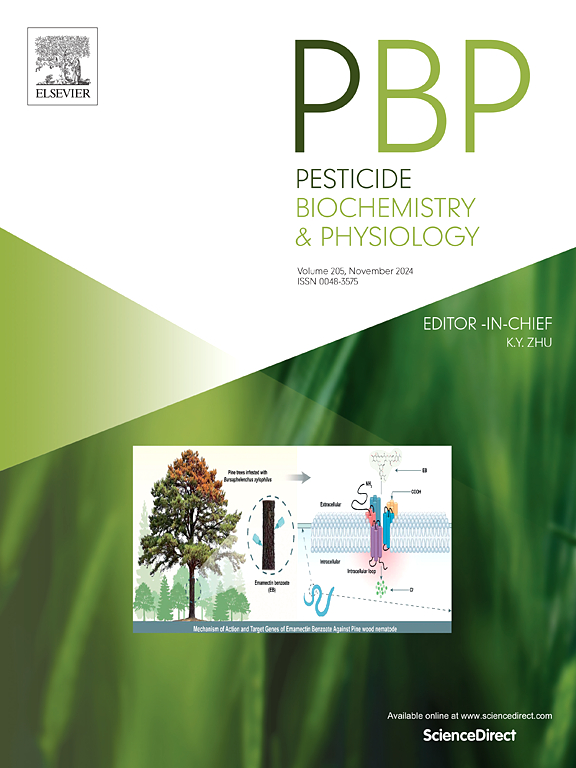N-acetylglucosamine sensor, Ngs1 contributes to Beauveria bassiana vegetative growth, oxidative phosphorylation, fungal development, and cell wall integrity during entomopathogen-insect interaction
IF 4.2
1区 农林科学
Q2 BIOCHEMISTRY & MOLECULAR BIOLOGY
引用次数: 0
Abstract
N-acetylglucosamine (GlcNAc), a key component of fungal cell walls and insect cuticles, is an important signal to activate fungal response during entomopathogen-insect interactions. Research on Ngs1, the only identified GlcNAc sensor and transducer, has been primarily restricted to Candida species. Although our previous work identified an Ngs1 homology in Beauveria bassiana, its physiological functions in entomopathogenic fungi remain largely unexplored. In this study, we unveiled the sub-localization of Ngs1 in the nucleolus. Further transcriptomic analysis revealed that Ngs1 plays a crucial role in vegetative growth, fungal development, and cell-wall construction by acting as a transcriptional mediator, particularly influencing carbon metabolism in response to insect cuticle stimulation. The absence of Ngs1 compromised vegetative growth across various carbon sources by downregulating expressions of key catalytic enzymes. Conversely, Ngs1 deficiency enhanced transcription levels of oxidative phosphorylation, leading to increased ATP and reactive oxygen species (ROS) production. Despite higher ATP levels, Ngs1-deletion mutants exhibited reduced asexual development and hyphal germination, primarily due to the function of Ngs1 in the central developmental pathway and Brg1/Nrg1-dependent pathway. Additionally, the downregulation of N-glycan biosynthesis in ΔNgs1 diminished cell wall components, resulting in decreased cell wall resistance to lysis and impaired fungal development. These findings advance our understanding of the regulatory role of Ngs1 in B. bassiana during host interactions and provide a theoretical foundation for engineering fungi to maintain or even enhance pesticidal activity.

求助全文
约1分钟内获得全文
求助全文
来源期刊
CiteScore
7.00
自引率
8.50%
发文量
238
审稿时长
4.2 months
期刊介绍:
Pesticide Biochemistry and Physiology publishes original scientific articles pertaining to the mode of action of plant protection agents such as insecticides, fungicides, herbicides, and similar compounds, including nonlethal pest control agents, biosynthesis of pheromones, hormones, and plant resistance agents. Manuscripts may include a biochemical, physiological, or molecular study for an understanding of comparative toxicology or selective toxicity of both target and nontarget organisms. Particular interest will be given to studies on the molecular biology of pest control, toxicology, and pesticide resistance.
Research Areas Emphasized Include the Biochemistry and Physiology of:
• Comparative toxicity
• Mode of action
• Pathophysiology
• Plant growth regulators
• Resistance
• Other effects of pesticides on both parasites and hosts.

 求助内容:
求助内容: 应助结果提醒方式:
应助结果提醒方式:


